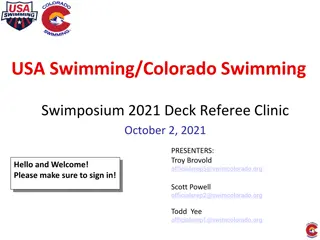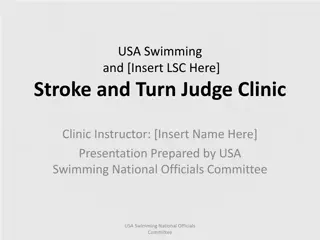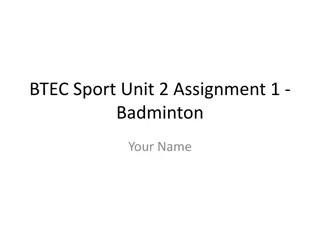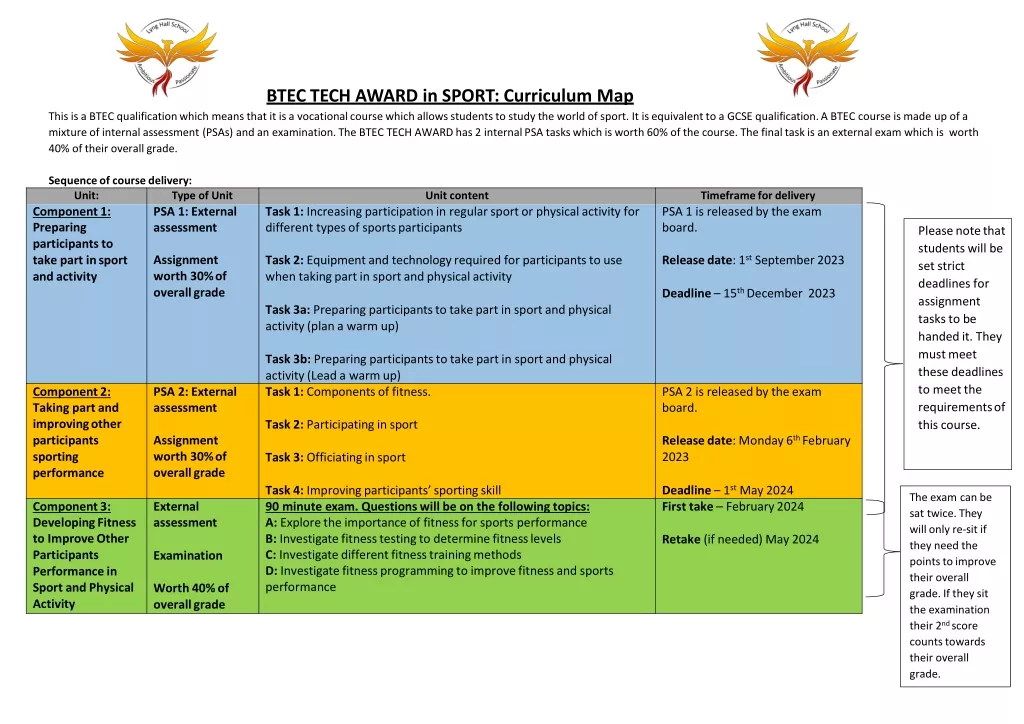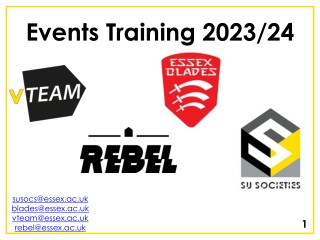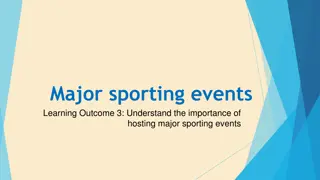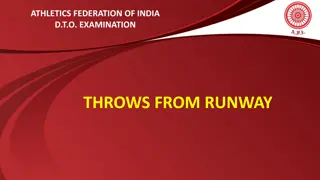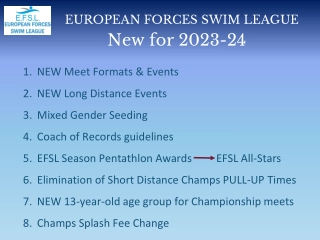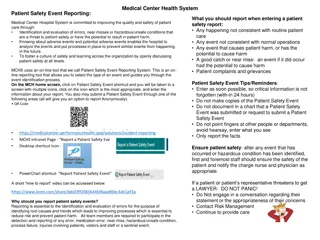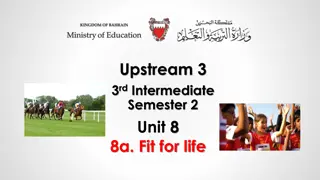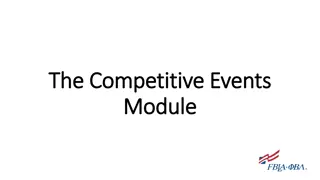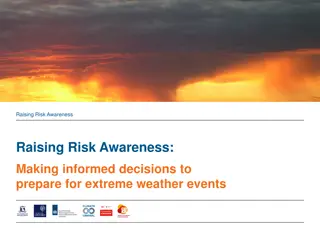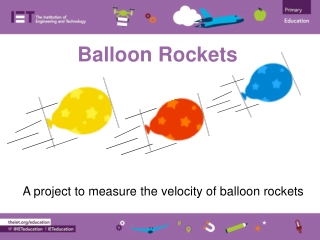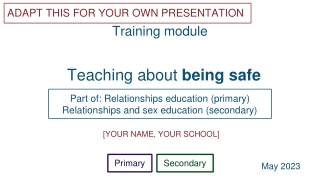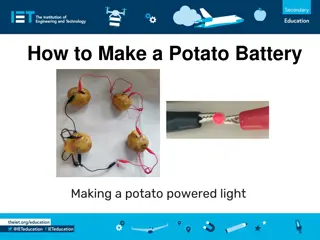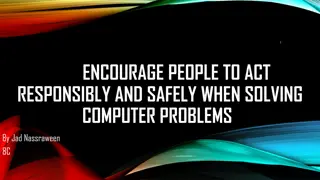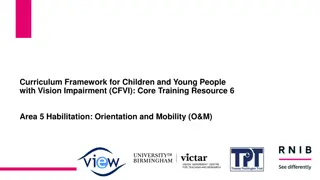Officiating Safely in Throws Events
Learn essential safety guidelines for officiating shot put, discus, javelin, hammer throw, and weight throw events. Follow instructions on field safety, implement handling, and conduct safe competitions to prevent accidents.
Download Presentation

Please find below an Image/Link to download the presentation.
The content on the website is provided AS IS for your information and personal use only. It may not be sold, licensed, or shared on other websites without obtaining consent from the author. Download presentation by click this link. If you encounter any issues during the download, it is possible that the publisher has removed the file from their server.
E N D
Presentation Transcript
Officiating Throws Events Shot Put Discus Javelin Hammer Throw Weight Throw
Safety In The Field NEVER turn your back on the throwing circle or runway. ALWAYS watch the complete flight of an implement... NEVER take your eyes off it! BE CAREFUL on slippery grass. NEVER return an implement by throwing or rolling it back to the circle or runway. NEVER use any part of your body to stop the implement. ALWAYS wear proper footwear.
Safety In The Field Watch and retrieve the throw (implement) from the side and not the front. I was wondering why the Discus got larger and larger and then it hit me. Place the indicator stick in the mark immediately before allowing the implement to be retrieved.
Safety In The Field Be aware that the implement can bounce or be deflected by dry ground or surface imperfections. Also, be aware in Hammer that the wire and/or handle can whip around after the implement lands so approach cautiously.
Tips For Conducting Safe Competitions Limit access to jumps and throws areas Provide adequate time for warm-up Closely supervise all warm-up activities Use calls, rules and assertive leadership Weather Broom, Towel, Doormat Adjacent events Track, Jumps Check barriers; Flag sector Practice throws within sectors only Control access to implements (impound) Check implements for damage and for weights & measures mark of the day Walk all implements back, no tossing Retrieve on ONE SIDE communicate which
Officiating Duties in the Throws Measurement of throwing distances Distance is measured from the fault point in the circle/runway to the first point of landing in the field with the zero end of the tape where the implement lands Watch for foot faults With throwing circles, the foot can pass over the top of the front of the circle but cannot touch the front of the circle Watch how the athletes leave the throwing area Implement must land before an athlete can leave the circle/runway Athlete must leave through the back of the throwing circle Athlete can leave at any point behind the white arc line (javelin) Watch how the implements are thrown Javelin - above shoulder; no end-over-end twirling Shot - from the neck, not a baseball pitch It will not be considered a failure if the discus or any part of the hammer strikes the cage after release
Conducting The Competition Definitions Trial An attempt in a throwing event Flight A round of trials for a group of competitors Qualify Earn the right to be finals Foul An attempt counted as a trial but not measured because of a rule violation
Marking / Measuring Mark closest to scratch line. Round down to nearest cm
Marking / Measuring Tape Pull through arc center No twists or slacks Watch tape zero
JUDGING THE SHOT PUT The shot must be put from the neck or close proximity to the neck and released in one motion Shot cannot be allowed to fall behind the plane of the shoulder Shot cannot be allowed to fall below the shoulder Often difficult to view... It takes experience to determine the difference between a put and a throw
Shot Officials Placement Sample of shot put officials placement showing circle, indicator board, athlete area, and location of officials and volunteers. Officials are involved with watching for faults in throwing (1); measuring the throw (2,4); spotting the location where the shot lands (3,5); recording result of the throw (6); displaying results of throw on the indicator board (7); announcing the throwing order (9). The Chief Judge oversees the entire operation.
All implements thrown must land within the sector as marked by the two lines. Implements landing on any part of the line, or outside the line, will be recorded as faults. The graphic shows three landing spots, two touching the line (illegal) and one inside the sector (legal).
Check that the athlete does not step outside the circle or touch it while throwing. This graphic shows three illegal throws.
Discus Officials Placement Sample of shot put officials placement showing circle, indicator board, athlete area, and location of officials and volunteers. Officials are involved with watching for faults in throwing (1); measuring the throw (2,4); spotting the location where the shot lands (3,5); recording result of the throw (6); displaying results of throw on the indicator board (7); announcing the throwing order (9). The Chief Judge oversees the entire operation.
Javelin Officials Placement Sample of javelin officials placement showing runway, indicator board, clock, athlete area, and location of officials and volunteers. Officials are involved with watching for faults in throwing (1); measuring the throw (2,6); recording the result of the throw (8); spotting the location where the javelin lands(4,5,7,12); displaying results of the throw on the indicator board (9); announcing the throwing order (11); and retrieving the thrown javelin (13). The Chief Judge oversees the entire operation.
Sample of a Scoring Sheet in the Throws The longest distance thrown, no matter when achieved, shall be considered the best throw If there is a tie, then the next longest distance thrown breaks the tie. In a tie, the longest distance throw is still considered the best throw.
JAVELIN LANDING The point of the javelin must contact the ground first... but it does not have to stick in the ground A flats judge determines whether the javelin touches point first and other judges determine the place where the point first touches the ground
Discus and Hammer Thrown From a Cage Competitors throw from a circle within a cage Officials remain outside the cage during the throw Once the competitor has exited the circle legally, the measurement is made
Generic Throws Rules Competitors are given three attempts Top 8 competitors are give three additional attempts Longest throw wins


